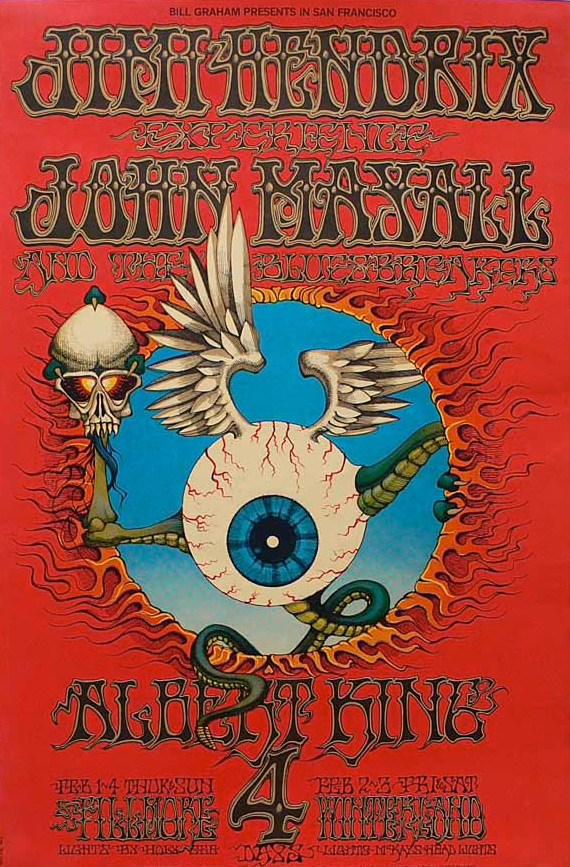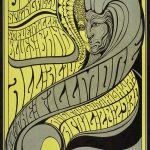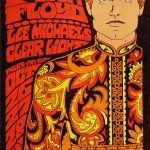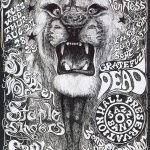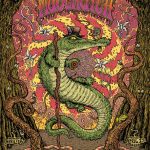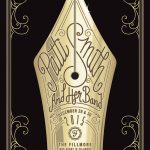Fillmore posters created a new art form that continues today
By ARLENE OWSEICHIK
It was the psychedelic springtime — 1965 into early 1966. Owsley acid, not yet illegal, hit the streets. The Family Dog started putting on dances. Ken Kesey’s Merry Pranksters put on several small-scale acid tests, then a major test at The Fillmore, which Bill Graham helped produce. Bill hosted three wildly successful Mime Troupe benefits.
With the success of his early shows behind him, Bill decided to throw his heart into producing concerts at The Fillmore. He was always driven to give everyone — patrons and bands alike — more than they expected. So it’s no surprise he embraced posters wholeheartedly.
The music and poster scene in San Francisco had an immediate national impact, with write-ups in Time, Life, Look and Billboard magazines. Many of the posters had additional print runs and were sold by head shops and poster dealers around the country.
The first artist to create posters for Bill Graham was Wes Wilson, who was a partner at the shop that printed the flyers for the Mime Troupe parties. He also created posters for the Family Dog, but said he found more freedom with Bill Graham. Wilson was inspired by late 19th century art movements such as Art Nouveau and the Viennese Secessionists, and took the illustration and lettering in a direction not seen before. It surely drove Bill Graham crazy that the text was hardly readable. But Wes convinced him the unreadability is what gave the posters intrigue. Wes created 62 posters for Bill by the time he stopped in 1967.
- Wes Wilson
- Bonnie MacLean
- Lee Conklin
Bonnie MacLean, Bill’s girlfriend at the time, was helping him run The Fillmore. When Wes left, Bonnie took on the task of making posters. Hers was a classic style depicting seemingly royal subjects with precise lettering. She became Bill’s wife and the mother of their son, David Graham.
Artist Lee Conklin was drawn to San Francisco after seeing articles about Wes Wilson. He showed Bill his portfolio and immediately was given an assignment. Lee’s mission in his art was to translate the psychedelic experience onto paper. He made 31 posters in 1968 and 1969.
Alton Kelly and Stanley Mouse were two like-minded souls who met in San Francisco and collaborated on many posters for the Fillmore and the Family Dog. Kelly liked coming up with irreverent or humorous found images, like the Ziz-Zag man, which Mouse would encase in fluid lettering. Stanley Mouse also has had a remarkable solo career, creating iconic posters, album covers and band logos for the Grateful Dead, Journey, Santana and innumerable other bands.
Next came Rick Griffin, who grew up in Southern California. He was a surfer who loved doing airbrush art on motorcycles. He became a staff artist for Surfer magazine and even developed a famous character, Murphy. He made only eight posters for Bill, but they were quite the eight. One of them, the Jimi Hendrix flying eyeball, is arguably the most iconic Fillmore poster of all.
The artists and printers were true collaborators. The artists drew their art in pen and ink and added a tissue overlay showing color specifications. The printers would then make acetate overlays and burn plates to drop in the color as the artist wished. Most of the posters were printed at Tea Lautrec Litho in San Francisco, owned by Levon Mosgofian, on large sheets of paper that included matching handbills and sometimes even tickets for the show.
San Francisco artist David Singer made 66 posters between 1969 and 1971. He told me he was lucky enough to have a meeting with Bill to show his portfolio of collage art. Bill set them up around his office and studied them for a long time and then assigned the next 12 Fillmore West posters to David. His style was very clean. Bill was thrilled — finally — to have relative readability on his posters. David made the poster for the closing week at the Fillmore West.
Local artist Randy Tuten also made many posters for Bill in the ’70s and ’80s. He told me he always dealt with Bill directly and that Bill was generous in letting him do as he pleased. Randy’s Led Zeppelin poster featuring a large avocado is well known for its charm and whimsy. Randy also worked for years hand lettering the newspaper ads for Bill Graham Presents.
Almost 300 posters were created in the BG series between 1965 and 1971.
Like Randy Tuten, I made newspaper ads for Bill Graham Presents before becoming art director in 1985. Since The Fillmore reopened in 1988, there has been a steady stream of the new “F” series Fillmore posters, except for the years 1989 to 1994, when The Fillmore was closed for renovations after the Loma Prieta earthquake.
We have surpassed 1,400 posters in this new “F” series. Unlike the early posters, they are not used to advertise upcoming shows, but are commemorative only. They are given out to patrons as they exit the show.
- Alan Forbes
- Marq Spusta
- Matthew Fleming
An integral group of people is involved with every poster. Michael Bailey books the shows at The Fillmore and initiates the posters. I assign and shepherd them through the process. Poster artists create the art. Keith Bjorkman of Zebra Graphics makes certain the digital files are constructed properly for printing. All of our 13-inch by 19-inch posters are printed by Bob Cook’s Great Impressions — and through hell and high water, we have never missed a deadline.
For everyone involved, the posters are a labor of love. Every Fillmore poster conjures up a musical moment in time for the people who were there — or wish they
were.
For 20 years, Arlene Owseichik was art director of Bill Graham Presents, creating nearly 1,000 posters for The Fillmore and other venues. She continues, now through her firm Big Picture Design, to create posters for The Fillmore.



